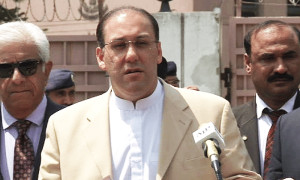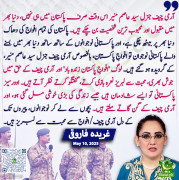Night_Hawk
Siasat.pk - Blogger
Hand-held device to replace stethoscope soon
(IANS) / 25 January 2014
Read this right. If a doctor visits you without a stethoscope, then don't get surprised.
Slick hand-held ultrasound devices that look like smartphones are set to replace the 200-year-old stethoscopes very soon, an Indian-origin doctor has said.
These pocket-sized ultrasound machines can diagnose heart, lung and other problems more accurately than traditional stethoscopes.
With ultrasound devices, one can not only look at the heart, but all of the organs in the body, said Jagat Narula, professor of cardiology at Mount Sinai School of Medicine in New York and co-author of the paper.
The ability to get a better look inside the body could prevent misdiagnoses, and help doctors detect abnormalities that need to be followed up with other tests.
"Many authors have argued that ultrasound has become the stethoscope of the 21st century," said Narula, who did his cardiology fellowship training and PhD from the All India Institute of Medical Sciences (AIIMS) in 1989.
The new devices could potentially impact the relationship between the doctor and patient, Narula said.
"Now, when a patient comes to me, I just talk to them for a few minutes, then I send them for a test and tell them to come back," he said.
But "with an ultrasound device, I will be examining them on the bedside, spending 10 to 15 minutes with them, and talking as I'm doing ultrasound examination", Narula added in a paper published in the journal Global Heart.
Ren Laennec, the French physician who invented the stethoscope in 1816, used the stethoscope as an indirect way to "look" into the chest.
http://tinyurl.com/njmk9xf
(IANS) / 25 January 2014
Read this right. If a doctor visits you without a stethoscope, then don't get surprised.
Slick hand-held ultrasound devices that look like smartphones are set to replace the 200-year-old stethoscopes very soon, an Indian-origin doctor has said.
These pocket-sized ultrasound machines can diagnose heart, lung and other problems more accurately than traditional stethoscopes.
With ultrasound devices, one can not only look at the heart, but all of the organs in the body, said Jagat Narula, professor of cardiology at Mount Sinai School of Medicine in New York and co-author of the paper.
The ability to get a better look inside the body could prevent misdiagnoses, and help doctors detect abnormalities that need to be followed up with other tests.
"Many authors have argued that ultrasound has become the stethoscope of the 21st century," said Narula, who did his cardiology fellowship training and PhD from the All India Institute of Medical Sciences (AIIMS) in 1989.
The new devices could potentially impact the relationship between the doctor and patient, Narula said.
"Now, when a patient comes to me, I just talk to them for a few minutes, then I send them for a test and tell them to come back," he said.
But "with an ultrasound device, I will be examining them on the bedside, spending 10 to 15 minutes with them, and talking as I'm doing ultrasound examination", Narula added in a paper published in the journal Global Heart.
Ren Laennec, the French physician who invented the stethoscope in 1816, used the stethoscope as an indirect way to "look" into the chest.
http://tinyurl.com/njmk9xf
- Featured Thumbs
- http://www.khaleejtimes.com/images/tet_01252014.jpg





































